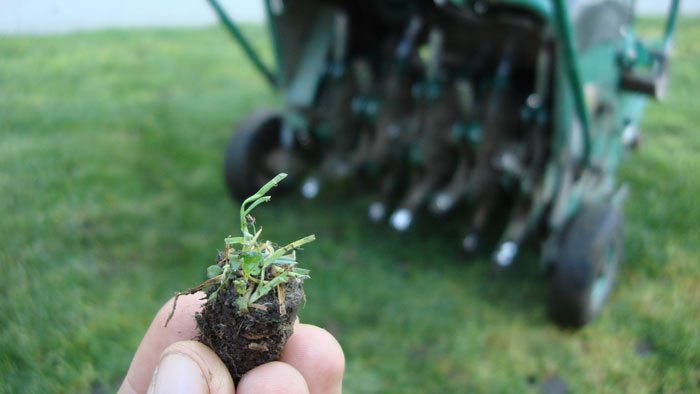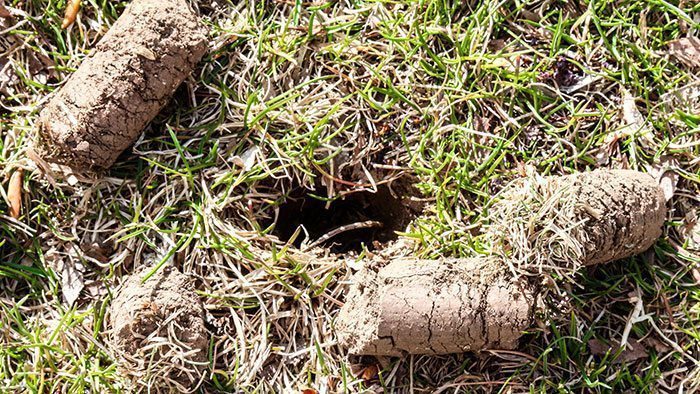Core Aeration Process Explained
Stage 1
After aerating takes place, you will see your lawn covered in the cores, or "plugs" pulled. These will dissolve over the next 2 weeks and return to the lawn. Do not rake them up or remove them.
Stage 2
After 1-2 weeks you will see new and expanding roots appear in the holes. This means that compaction is being relieved, giving the root system room to expand and that your lawn is responding well to additional oxygen and nutrients in the soil.
Stage 3
A single aeration is very beneficial to reduce puddling and reduce storm water runoff. This will now be absorbed into the lawn and nutrient uptake is greatly improved as well. If over seeding, you will see seed germination in just a few days from the service. Introducing new strains of seed is important to keep a healthy, thick, lush lawn. New strains are more foot traffic, insect, and disease resistant and will replace older thinning turf.
Stage 4
With consistent aeration over time, your lawn will resist drought stress and have higher heat tolerances. Your lawn will also be able to go longer periods with little water before stress or wilting occurs. Aeration is a key component in a healthy lawn along with regular proper mowing, trimming and fertilizing.


